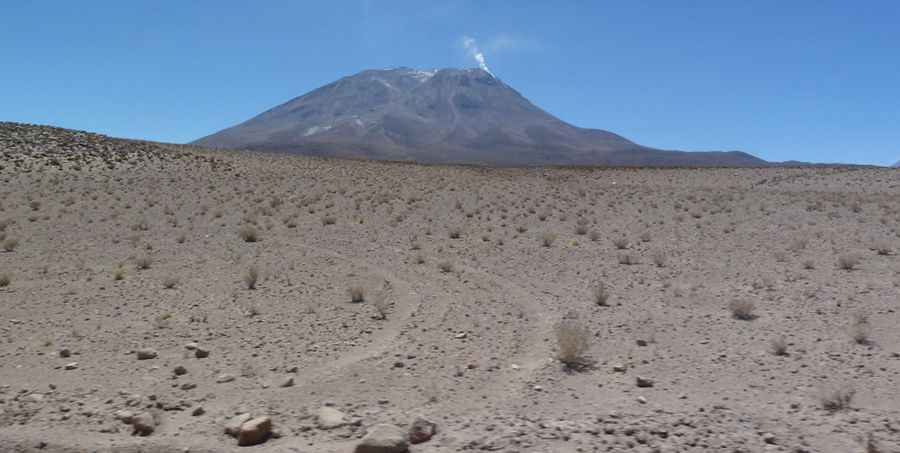The wild Ollagüe Volcano is one of the highest roads of South America
Volcán Ollagüe is an imposing andesite stratovolcano located in the Andes. Standing at an elevation of 5,868m (19,251ft) above sea level, it marks the boundary between northern Chile's Antofagasta region and Bolivia's Potosí department. It's one of the highest roads of South America.

Is the road to Volcán Ollagüe unpaved?
Situated in the Northern Atacama Desert, the road leading to the peak, also known as Oyahue, is completely unpaved, tracing the volcano's northern side. This extreme old mine road previously served a now-defunct sulfur mine infamous for its poor working conditions. The road terminates at an altitude of 5,705m (18,717ft) above sea level. It's recommended only for high-clearance 4WD vehicles. This challenging road has tested many experienced drivers and is not advised for beginners. The road is extremely narrow and flanked by a precipitous drop of hundreds of meters, without the safety of guardrails. It ranks among the highest roads in the country and is known for its breath-taking and somewhat terrifying reputation. Expect to negotiate hundreds of hairpin turns.
How long is the road to Volcán Ollagüe?
The journey starts from Ollagüe, a Chilean border village and commune in the El Loa Province, Antofagasta Region. The road to the summit spans 24.7km (15.34 miles), featuring 35 sharp hairpin turns. The ascent is considerably steep with an elevation gain of 1,987m and an average gradient of 8.04%.
What’s the weather like on the road to Volcán Ollagüe?
It's not advisable to traverse this road in severe weather conditions as avalanches, heavy snowfalls, and landslides can occur unexpectedly. The area can be hit by violent storms in January and February. It's one of the highest motorable roads in the world. Although no historical eruptions have been confirmed from Ollagüe, it exhibits intense fumarolic activity and a persistent steam plume emanates from a fumarole on the south side of the summit dome.
Is the ascent to Volcán Ollagüe dangerous due to the elevation?
Those with respiratory issues or heart conditions are strongly advised against this drive. The notorious lack of oxygen at this altitude can prove challenging. Most people begin to experience altitude sickness at around 2,500-2,800 meters. The oxygen level for engine combustion is extremely low. Altitude sickness is a major hazard that can affect anyone regardless of age or fitness level. The oxygen content at the summit is about 40% less than at sea level, making breathing more difficult. As a result, your pulse rate will increase and movement will be more strenuous. The high altitude combined with the risk of altitude sickness, weather concerns, the steep road gradient, and overall inaccessibility contribute to the dangerous conditions and difficulties of summit trips.
Pic: camille andrew